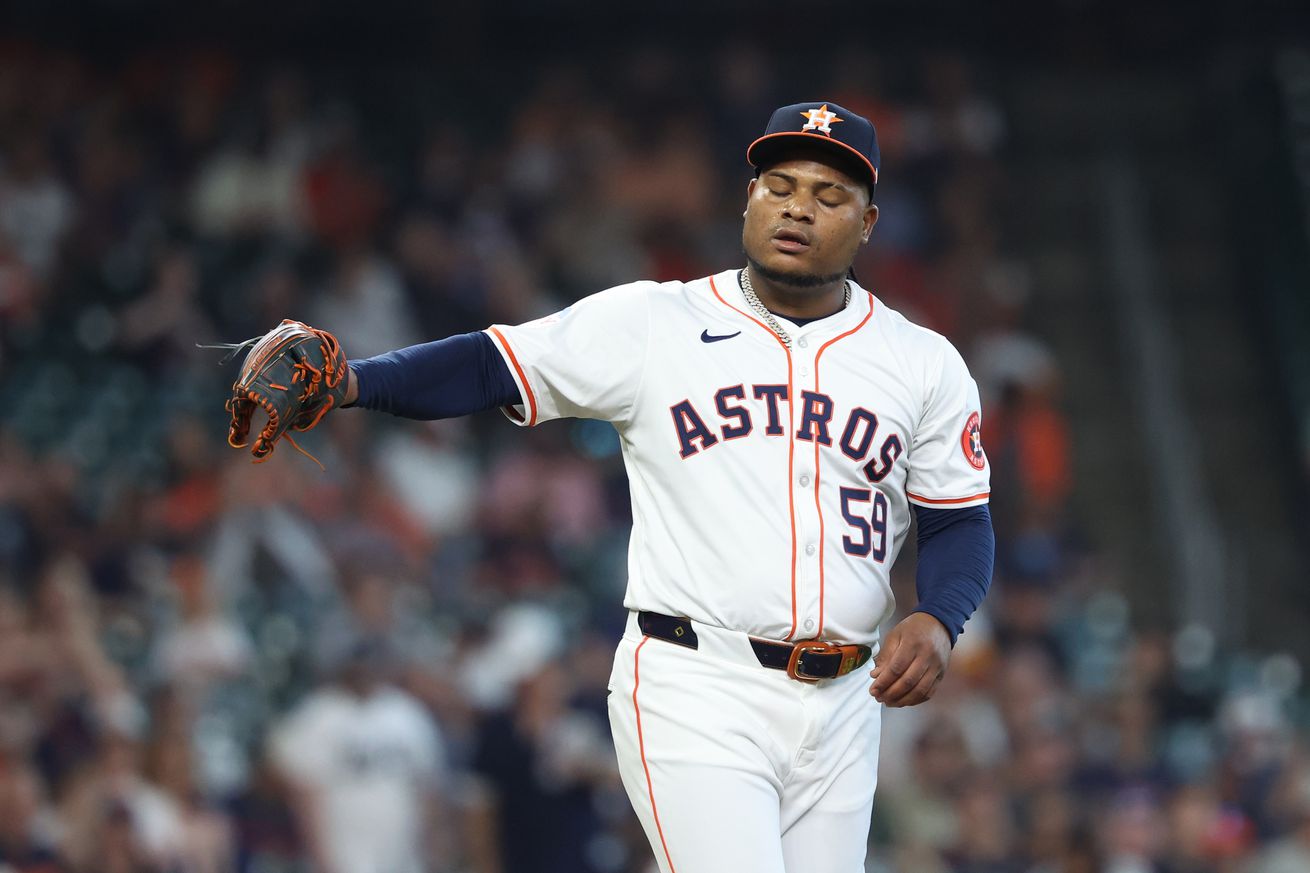
Has Hunter Brown overtaken Framber Valdez as the Astros’ No. 1 starting pitcher?
Framber Valdez and Hunter Brown were the Astros’ starting pitchers in the wild card series. Obviously the Astros lost both games, but Hunter Brown’s starting performance was considerably better than Framber Valdez’s performance. Framber normally is viewed as the ace of the Astros’ pitching staff, or “No. 1” starter, if you prefer that term.
I realize that reaching conclusions based on one playoff series can be a fool’s errand. However, this playoff series leaves me wondering if Hunter Brown will surpass Framber Valdez in the future as the No. 1 pitcher in the rotation. And to some extent, the answer to the question may not mean much. Reverse Brown’s and Valdez’s order in the rotation, and it doesn’t make a ton of difference, because they both will start a bunch of games next season. But it can affect ordering of pitchers in future playoff series. And the No. 1 pitcher frequently tends to face the opposing team’s No. 1 pitcher over the course of the season.
And this is what happened to Framber in this series. He had a so-so game which might normally be sufficient, but was inadequate when the opposing pitcher is the presumptive Cy Young Award winner in the AL. Fangraphs’ Cy Young Award model ranks Valdez somewhere around 5th – 6th best starting pitcher in the AL, whereas the Tigers’ starter, Tarik Skubal, is clearly ranked as the best pitcher in the AL (by a wide margin over the No. 2 ranked pitcher).
The Game Score statistic is a method that summarizes the quality of a particular game start. In ALWC Game 1, Valdez’s Game Score was 38, which is poor. Hunter Brown’s Game Score in Game 2 was 68, which is good to very good.
The 2024 playoff performance is a continuation of Valdez’s weak performance in the 2023 playoffs. His average game score in the 2023 post season was 37, almost the same as the 38 score for Tuesday’s ALWS. This is also nearly the same as Valdez’s average game score over 5 games in the 2021 playoffs (39). During the Astros World Series championship run, Valdez’s average game score in the playoffs was 67, which is similar to Hunter Brown’s game score in the ALWS Game 2.
Since the 2d inning is when all damage was done, we can look a little closer at the Tigers’ approach to Valdez in that inning. The Tigers utilized four singles and 1 walk to score three runs. The hits came from three RHB (Rogers, Vierling, and Perez) and one LHB (Sweeney). Two ground balls and two line drives comprised the inning’s hits. The Tigers’ hitters took a deliberate strategy of controlled hitting up the middle or to the off-field.
The Athletic described this strategy: “If the Tigers wanted any chance to win today, they had to find a way to get to Valdez. That felt like a tall order for a team that had just a .660 OPS against left-handed pitching this season… Sure enough, the Tigers chased Valdez after only 4 ⅓ innings. Their right-handed batters took a clear opposite-field approach and nicked Valdez with paper-cut two-out singles that turned into a three-run second inning.”
If this seems familiar, maybe it’s because the Rangers used a similar opposite field approach against Valdez in the ALCS.
In an in-game interview during the ALWS, manager Joe Espada said Valdez’s stuff was good, but he was having trouble keeping his sinker down in the zone. And it appears that, in the second inning, the Tigers were able to poke the high sinkers and change ups the other way.
The strike zone table below shows the batting average by location for Detroit’s right hand batters against Valdez. The pitches in the upper middle and away part of the zone were susceptible to being hit at a high batting average.

Brooks Baseball
Both the Tigers and Rangers successfully waited for sinkers on the outside part of the zone and used an opposite field approach to poke grounders and liners for hits. When the MLB outlawed the infield shift defense, some of us hypothesized that Valdez would be particularly harmed by this rule change. And the rule change, which occurred after the 2022 season, may have affected Valdez’s lessor performance in the 2023 and 2024 playoffs. Furthermore, as a ground ball pitcher, Valdez relies on contact and suppressing BABIP. But BABIP, by nature, is volatile, which in turn may create more volatile outcomes for him in the playoffs.
It’s unclear what Valdez can do to combat these tactics, other than honing his command of pitches so that they stay down in the zone more consistently.
Despite his up and down performances in the playoffs, Valdez provides tremendous production to the Astros during the regular season by eating innings and overall run prevention.
Hunter Brown has produced almost the same ERA+ as Framber Valdez during the 2024 season. (Valdez 3.36 and Brown 3.27) However, given his younger age and greater remaining team control, it’s possible that Brown’s upward trajectory is just beginning. As good as Valdez has been, I wouldn’t be surprised if Brown surpasses Valdez as the team’s No. 1 starter at some point in the future.